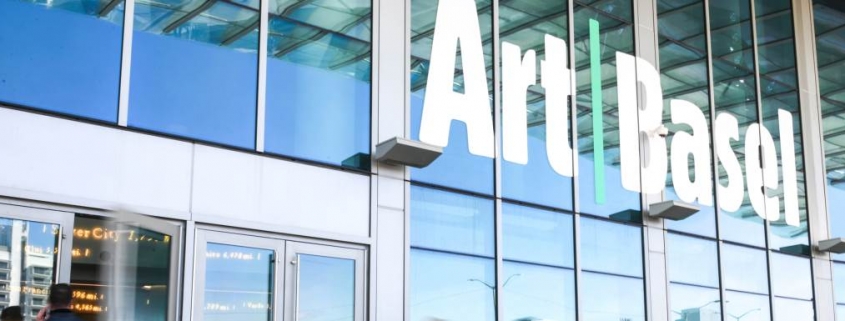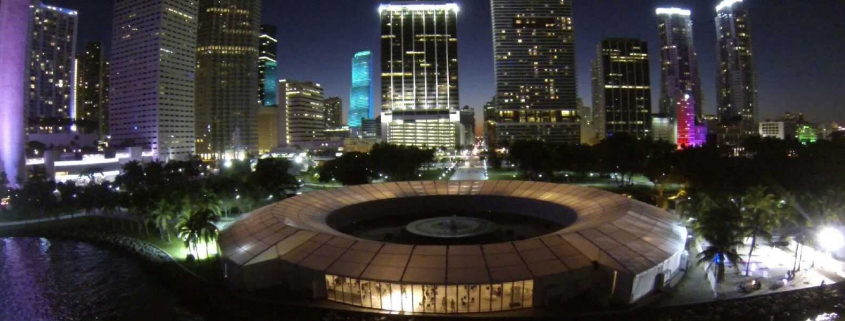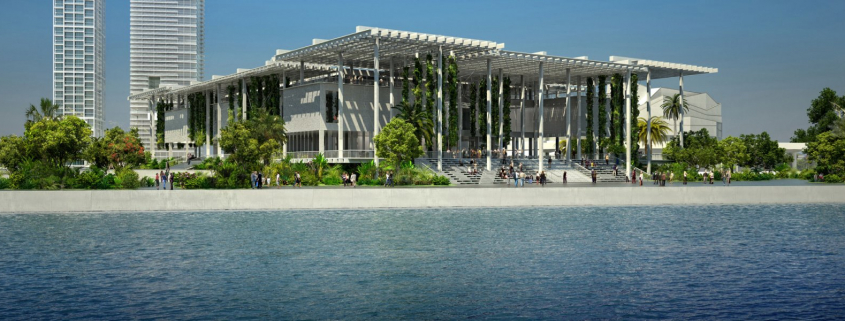According to a press release, the 2022 edition of Art Basel Miami Beach will feature 283 galleries from 38 countries and territories – including 26 first-time participants.
Posts
The art exhibition that started in Switzerland in 1970 and has spread around the world, becoming one of Miami Beach’s most important yearly events, is coming back to the city with “robust measures to create a safe fair environment.”
Since its launch in Miami in 2002, Art Basel has been attracting people from all over the world who appreciate innovation and creativity.
Today, satellite events have spread to Wynwood, Midtown, downtown, Mid-Beach and North Beach, and last year about 75,000 people attended the main fair. The first Basel fair featured 160 galleries from 23 countries, attracted 30,000 visitors and has grown and grown and grown — much like our skyline and real-estate industry. The growth and popularity of the event have bolstered the tourism industry and made us one of the fastest emerging cultural epicenters of the world.
For one week in December, all eyes started looking to Miami, including those of some of the world’s greatest architects and developers. Today, they are creating a skyline that is second to none, while Basel brings buyers appreciative of artistic creations. The burgeoning love affair between Miami and art can be evidenced by two recently announced museums: the Institute of Contemporary Art, Miami, the brainchild of Norman and Irma Braman, and the Latin American Art Museum by Gary Nader. Miami was largely a blank canvas in 2002, and so many have seized the opportunity to fill the space with remarkable buildings that are works of art themselves.
In downtown Miami, Zaha Hadid paired with developers Louis Birdman and Gregg Covin for the grandiose 1000 Museum. What was once the famous Bal Harbour Club will become the spectacular, all-new Oceana Bal Harbour, thanks to Italian architect and interior designer Piero Lissoni and developer Consultatio USA. And then there is Herzog & de Meuron, Richard Meier, Norman Foster and Rem Koolhaas, among the many other great names, with others soon to be announced.
Art Basel is certainly a time for businesses to shine. It provides an instant injection of funds into the economy, and the effects of the fair linger long after it leaves town. This is certainly the case for the real-estate industry, which has benefitted greatly from the influx of discerning art lovers. Amid the week of amazing art and all the accompanying events, the glitterati look up and see Miami as a wonderful place to purchase property. And they have many to choose from, for a relatively affordable budget. All are designed by local and international architectural greats who provide a perfect place to display a new piece or two.
The past week has seen traffic gridlock, long lines and a shortage of restaurant reservations. But as an enthusiastic collector of Latin American art and a member of the Photography Committee at the Solomon R. Guggenheim Museum, Daniel De La Vega, President of One Sotheby’s International Realty, will be sad to see the sun set on the event so soon. Art Basel will continue to play an important role in the growth of South Florida’s real-estate industry and the development of greater Miami as a whole. As a native Miamian, Mr. De La Vega is grateful for how this fair has moved the city forward in so many ways. As the tents come down and the works are carefully packed away, Miamians can still admire innovative and creative pieces all year-round.
All you have to do is look up to the skyline and thank the increased business to the bottom lines.
Source: Miami Herald
A gleaming addition to Miami’s waterfront greeted the art world elite as they jetted into town last week for the 12th edition of Art Basel Miami Beach: a $131 million art museum the city hopes will anchor its burgeoning cultural scene.
“Our cultural infrastructure has evolved,” said Thom Collins, director of the Perez Art Museum of Miami, also known as PAMM, which officially opened last Wednesday. ”We know people come here because they want the tropical environment. We needed to give them something that addresses our main competition, the beach.”
From sprawling, shaded verandas dotted with greenery, the Herzog & de Meuron-designed waterfront museum offers stunning vistas of Biscayne Bay and downtown Miami’s high rises. Inside the yawning space, architects used rough wood flooring and ceiling-high hurricane-proof windows to allow the building to blend into the existing landscape. “The ingredients here are cement, water, vegetation and sun, and the building should respond to these things,” said Jacques Herzog, whose firm famously converted a London power plant into the Tate Modern and designed San Francisco’s de Young Museum in Golden Gate Park.
Outside a plaza is being built designed by landscape firm James Corner Field Operations, renowned for the New York’s elevated High Line park in Manhattan. Since the first Art Basel Miami Beach, a spinoff of the fair held for decades in the Swiss city of the same name, Miami has undergone a cultural renaissance. Across from the convention center that hosts Art Basel is a Frank Gehry-designed symphony hall flanked by a large park where hundreds gather to watch projections of the performances inside the building broadcast on its exterior.
“People now think there is a component of Miami that includes art and culture,” said Carlos de la Cruz, a prominent Miami art collector who in 2009 opened a privately funded 30,000 square foot exhibition space filled with works from his family’s private collection, including works by Felix Gonzalez-Torres, Gabriel Orozco and Rudolf Stingel. “They wouldn’t have thought of that 20 years ago, and Art Basel is what put that idea there.”
The Wynwood neighborhood, a once-blighted area just north of downtown Miami, is now home to graffiti murals by world famous artists and galleries that attract collectors from around the world. In the Design District, award-winning restaurants buzz throughout the year and luxury retailers like Louis Vuitton and Cartier have taken up nearby storefronts.
Miami’s image as a rising cultural center has also been a boon for its volatile real estate market. ”Most people can’t believe the changes,” said Jorge Perez, chief executive of the Related Group, known as the “Condo King” of Miami. “Art has been one of the great catalysts in producing this great reaction to Miami and it translates most clearly in the real estate market,” he added, citing a new boom in luxury condo construction in the Miami area, with some buildings featuring high-priced art installations to attract buyers.
The hot real estate market has also attracted some high-profile firms, including Iraqi-born British architect Zaha Hadid, designer of a futuristic 62-story tower across the road from the new art museum, as well as Denmark’s Bjarke Ingels Group and Britain’s Lord Norman Foster. Yet the museum, partially funded by a $100 million public subsidy, came under fire in 2011, when Perez, a poster child for the city’s real estate collapse, got his name attached to it thanks to a donation of cash and art valued at $40 million.
Perez, who came under fire when billions of dollars of Related Group projects went into foreclosure, fired back at his critics, saying his intent with the museum was not only to burnish his own legacy, but to inspire more philanthropy from other wealthy Hispanics in the city. “Many times we’ve gotten the rap that either because we’re young migrants, or because we don’t have a tradition of giving we haven’t given our fair share to philanthropy,” he said. “Hispanics will be part of the mainstream of philanthropy it won’t just be Guggenheim, Getty and Whitney. You’ll also have Gonzalez and other Hispanic names that are becoming more and more a part of the economic mainstream.”
Miami remains a relatively young city, decades away from becoming a prominent art center outside of the week surrounding Art Basel and a host of satellite fairs. Many of the skyscrapers that now line the water were not there a decade ago and the region lacks major industries and major artistic educational institutions found in other cities. But art boosters say the new museum, like the Art Basel, will bolster Miami’s credibility as a global art hub. ”I think it’s going to be a Miami icon without trying to do anything other than being a really great museum,” Terence Riley, former curator at New York’s Museum of Modern Art, said during a public talk in November. “It’s going to be considered one of the most important contemporary museums anywhere,” added Riley who helped launch PAMM.
Source: AOL Real Estate
About Us
Ven-American Real Estate, Inc. established in 1991, is a full service commercial and residential real estate firm offering brokerage and property management services.
Subscribe
Contact Us
Ven-American Real Estate, Inc.
2401 SW 145th Avenue, Ste 407
Miramar, FL 33027
Brokerage & Property Management Services
Phone: 305-858-1188




